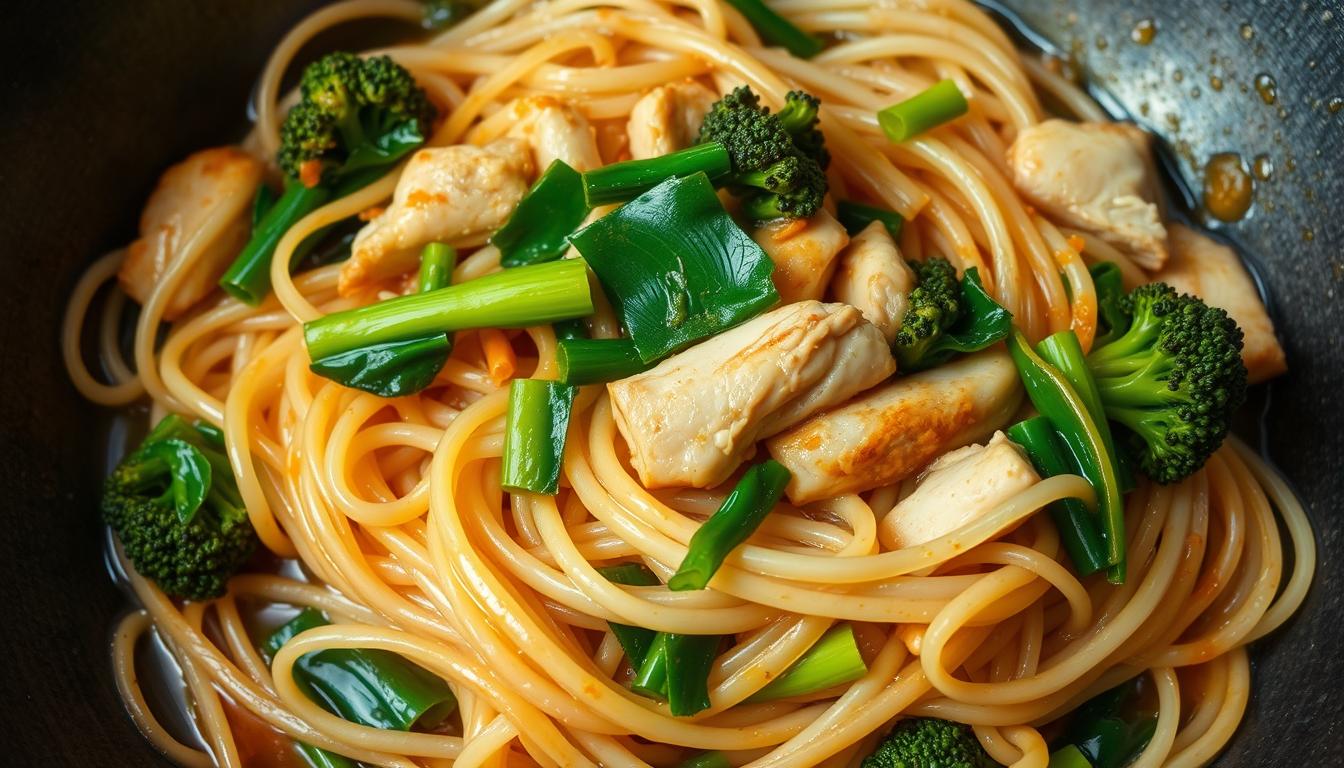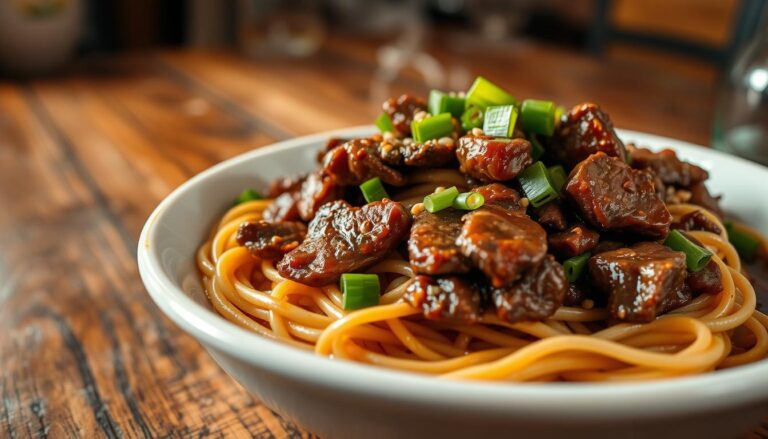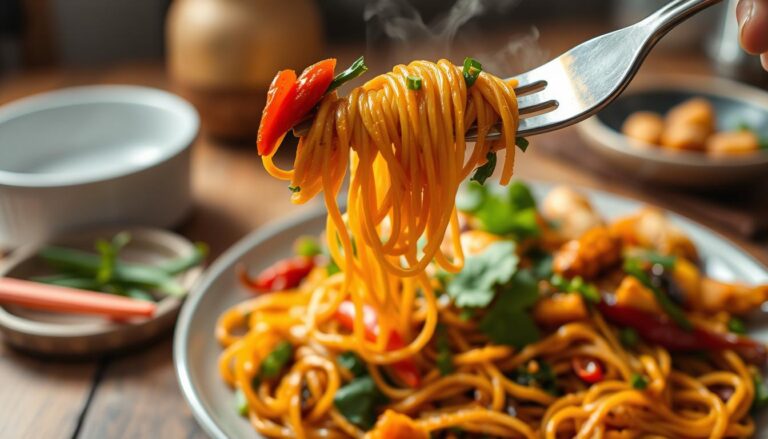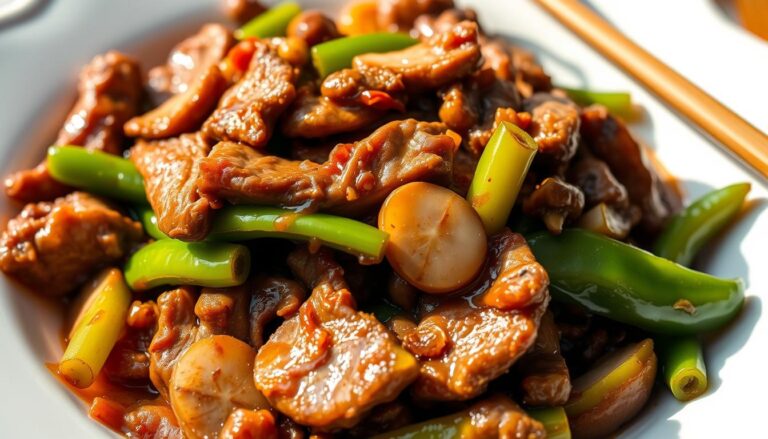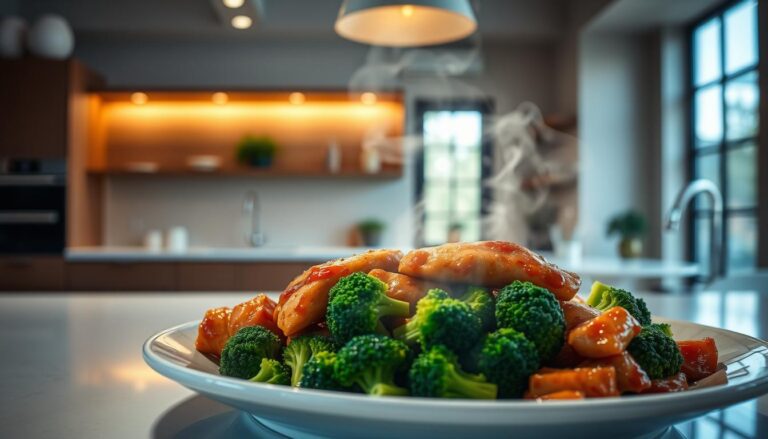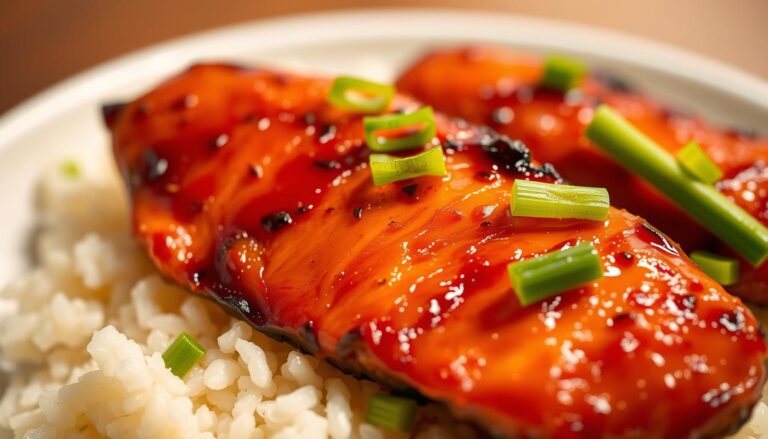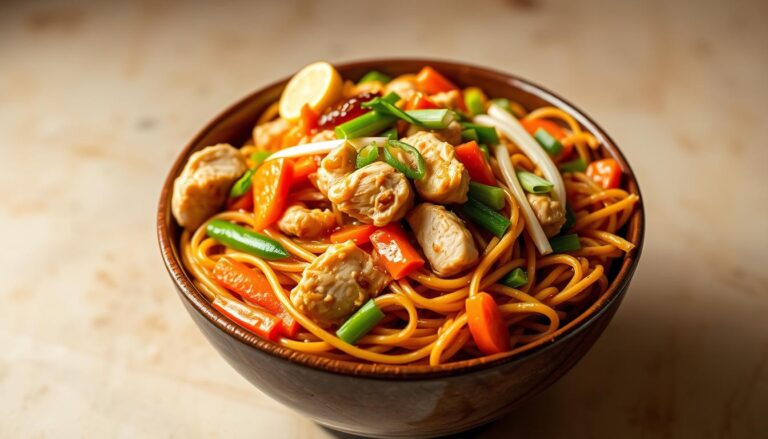Pad See-Ew Recipe: Authentic Thai Stir-Fried Noodles
Craving the bold flavors of Thailand’s street food scene? Look no further than Pad See-Ew, a savory stir-fry that combines smoky sweetness with chewy noodles. Translating to “stir-fried soy sauce noodles,” this dish stands apart from Pad Thai with its richer, caramelized depth. Born in bustling markets, it’s a staple you’ll find sizzling on griddles from Bangkok to food trucks in the U.S.
The secret lies in its simplicity. Fresh wide rice noodles soak up the glossy sauce blend of dark soy sauce, oyster sauce, and a touch of vinegar. Chinese broccoli adds crunch, while garlic and protein (like chicken or tofu) round out the meal. But texture is king here: slightly charred noodles prove you’ve nailed the technique.
Restaurants often skip the crucial step of caramelizing noodles separately, but home cooks can master it. Pre-cook your noodles until tender, then sear them in a hot pan for that signature smokiness. Balance the sweet-salty sauce carefully—too much sugar, and you’ll lose the umami punch.
Ready to bring Thai street food magic to your kitchen? This recipe celebrates tradition while inviting your twist. Share your creation and let us know how it stacks up against your favorite takeout!
Key Takeaways
- Pad See-Ew is a classic Thai street food dish focused on caramelized noodles and savory soy-based sauce.
- Fresh wide rice noodles or high-quality dried alternatives are essential for authentic texture.
- The sauce relies on a balanced mix of dark soy sauce, oyster sauce, and a hint of sweetness.
- Separately charring noodles creates the dish’s signature smoky flavor.
- Chinese broccoli (or substitutes like bok choy) adds freshness and crunch.
- Popular in both Thai markets and U.S. restaurants, it’s simpler to make at home than many assume.
The Story behind Pad See-Ew
Imagine walking through Bangkok’s vibrant markets at dusk. The air fills with the crackle of scorching woks and the rich aroma of soy sauce. This is where Pad See-Ew earned its stripes – born from Thailand’s working-class kitchens, then perfected by street vendors seeking fast, flavorful meals.
Origins and Street Food Legacy
Chef David Thompson notes, “This dish survives on simplicity – it’s the people’s fuel.” Vendors originally used leftover rice noodles, stir-frying them with garlic and basic sauces. The magic happens through wok hei – that smoky char from blistering heat you can’t replicate at home.
By the 1980s, Thai immigrants brought this comfort food to Sydney and Melbourne. Australians embraced its savory-sweet balance, making it a menu staple. Today, you’ll find versions from food trucks to upscale bistros – all chasing that authentic street-cart essence.
How It Stands Apart
Unlike Pad Thai’s tamarind tang, this recipe leans on dark soy’s caramel depth. There’s no fish sauce overpowering the mix. The noodles stay wider to hold more sauce, while Chinese broccoli adds bitter contrast missing in other stir-fries.
Want to taste history? Try this dish where textures matter more than toppings. Each bite honors generations of cooks who turned humble ingredients into crave-worthy art. Now that’s a legacy worth your fork.
Essential Ingredients and Prep Tips
Every great stir-fry starts with quality ingredients and smart prep work. For authentic results, focus on three pillars: noodles that hold sauce, balanced seasoning, and crisp-tender vegetables. Let’s break down what you’ll need and how to prepare each component efficiently.
Selecting the Right Noodles and Sauces
Fresh wide rice noodles (sen yai) are ideal—their flat surface caramelizes beautifully. If unavailable, use dried rice noodles labeled “stir-fry width.” Soak dried varieties in warm water until flexible but firm. Dark soy sauce gives the dish its mahogany color and molasses-like depth, while light soy adds salty brightness. Oyster sauce bridges both with savory-sweet complexity.
Chinese broccoli (gai lan) offers bitter contrast. Substitute bok choy stems or kale if needed. For proteins, slice chicken or beef thinly against the grain. Tofu? Press it first to remove excess moisture.
Prepping Proteins and Vegetables for Quick Cooking
Marinate proteins in 1 tsp light soy sauce and a pinch of sugar—it tenderizes and seasons. Cut vegetables into uniform pieces for even cooking. Rinse pre-soaked noodles under cold water to stop sticking.
- Undercook dried noodles by 1 minute—they’ll finish in the wok
- Prep sauce mix ahead: 2 tbsp dark soy, 1 tbsp oyster sauce, 1 tsp vinegar
- Organize ingredients in bowls near the stove
With everything measured and within reach, you’ll nail the fast-paced stir-fry process. No scrambling for sauces mid-cook!
Master the Perfect pad-see-ew at Home
Ever wondered why restaurant-style stir-fries have that irresistible char? The answer lies in a two-stage cooking process that separates protein/veggie prep from noodle caramelization. This method prevents sogginess and ensures smoky perfection.
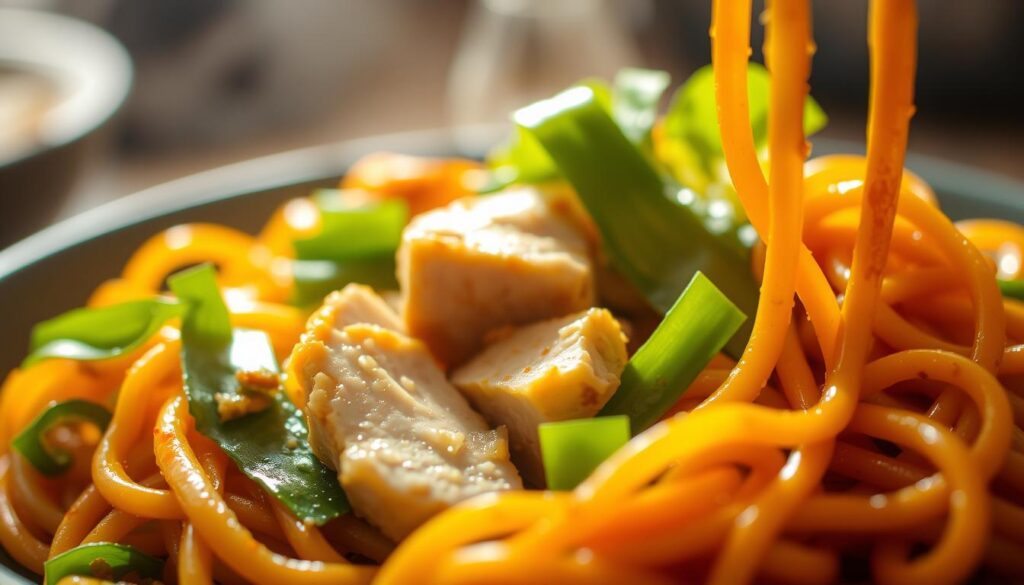
Techniques for Noodle Caramelization and Sauce Mixing
Start by cooking proteins and vegetables in a ripping-hot wok (400°F+), then set them aside. Reheat the pan until oil shimmers before adding noodles. Use tongs to press them flat – don’t toss! Let them sear 15 seconds per side for glassy edges.
Mix sauces beforehand:
- 2 tbsp dark soy sauce (color)
- 1 tbsp oyster sauce (umami)
- 1 tsp rice vinegar (brightness)
- ½ tsp sugar (balance)
Pour this blend over seared noodles, then fold gently – aggressive stirring breaks wide rice noodles.
Troubleshooting Common Pitfalls in Stir-Frying
If flavors taste flat, check your sauce ratios. Too sweet? Add vinegar. Too salty? A pinch of sugar helps. Noodles clumping? Drizzle 1 tsp oil and separate with chopsticks.
Avoid these mistakes:
- Overcrowding the wok – cook in batches
- Using cold pans – preheat 2 minutes
- Overcooking veggies – they should stay crisp
Remember: High heat + quick moves = that signature wok hei magic. Your recipe success starts with controlled chaos!
Conclusion
Creating restaurant-worthy Pad See-Ew hinges on two essentials: quality ingredients and fearless high-heat cooking. Fresh rice noodles and dark soy sauce form the foundation, while searing your noodles separately delivers that signature smoky edge. Balance sweet and savory elements in your sauce mix – this harmony defines authentic Thai street food.
Remember: prep work speeds up the stir-fry process. Chop veggies uniformly, pre-mix sauces, and keep ingredients within reach. Don’t shy away from letting noodles char slightly – that crisp texture elevates the entire dish.
This recipe isn’t just a meal; it’s a gateway to Thailand’s vibrant food culture. Swap proteins or greens to make it yours, but respect the technique. Once mastered, you’ll understand why these stir-fried noodles dominate street stalls and recipes worldwide.
Ready to test your skills? Share your sizzling results and tag #ThaiStirFryStories. Your perfect plate might inspire someone else’s culinary adventure!
FAQ
Can I use regular soy sauce instead of dark soy sauce?
Dark soy sauce adds color and sweetness, which is key for authentic flavor. Substitute with regular soy sauce plus a teaspoon of molasses or brown sugar if needed.
What noodles work best for pad see-ew?
Fresh wide rice noodles (sen yai) are traditional. Dried rice noodles can be used if soaked properly – avoid overcooking to prevent mushiness.
How do I prevent noodles from sticking during stir-frying?
Use high heat and a well-seasoned wok. Toss constantly and add a splash of oil if needed. Pre-soaking noodles in cold water also helps reduce starch buildup.
Is pad see-ew spicier than pad Thai?
Unlike pad Thai, it’s not typically spicy. The focus is on savory-sweet flavors from soy sauces and caramelization. Chili flakes or vinegar are added separately as condiments.
Can I make this dish vegetarian?
Yes! Swap proteins with tofu or tempeh. Use mushroom-based oyster sauce and ensure your dark soy sauce is vegan-friendly.
Why didn’t my noodles get that smoky char?
High heat is crucial. Let noodles sit briefly without stirring to caramelize. A gas stove works better than electric for achieving wok hei (breath of the wok).

